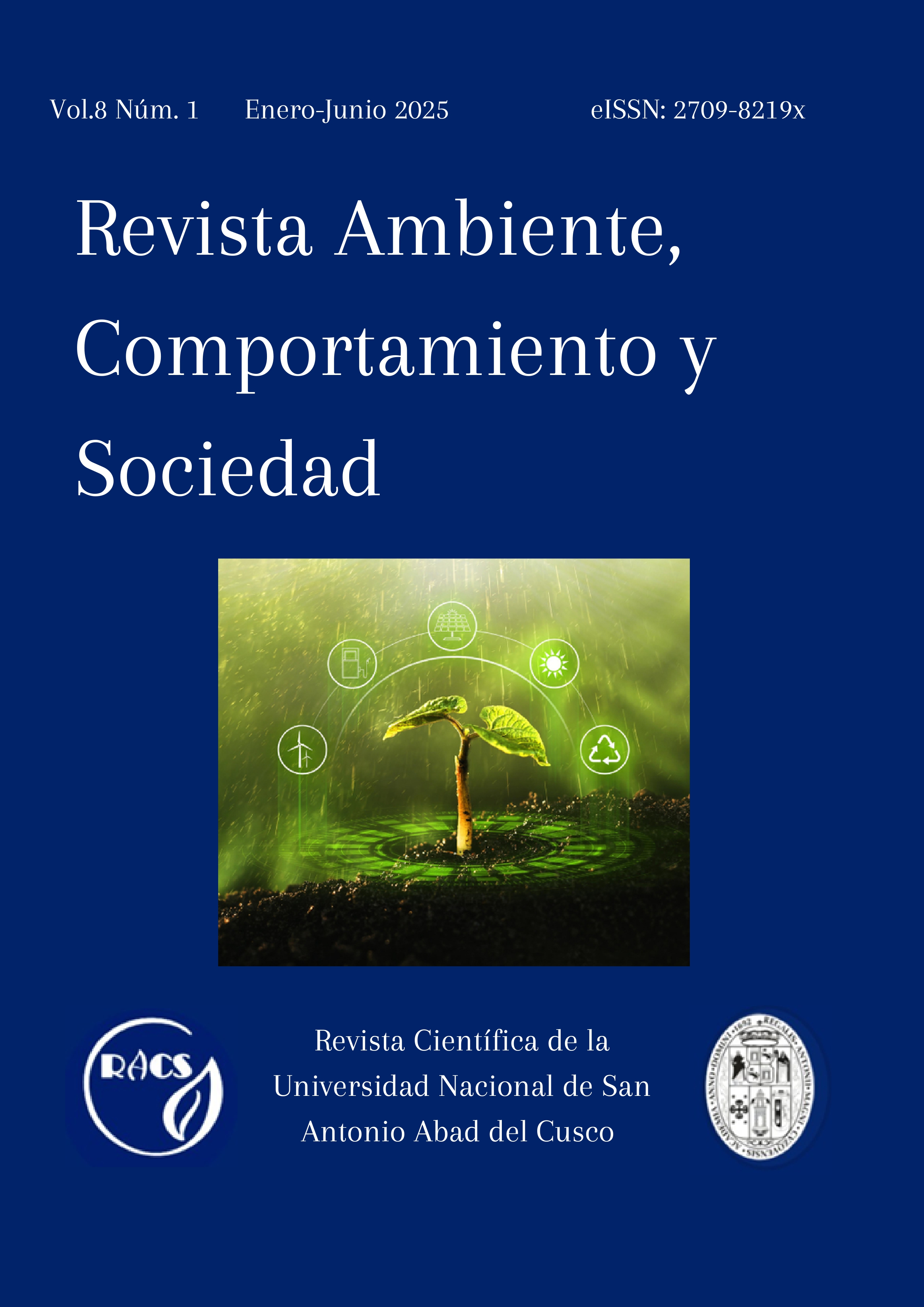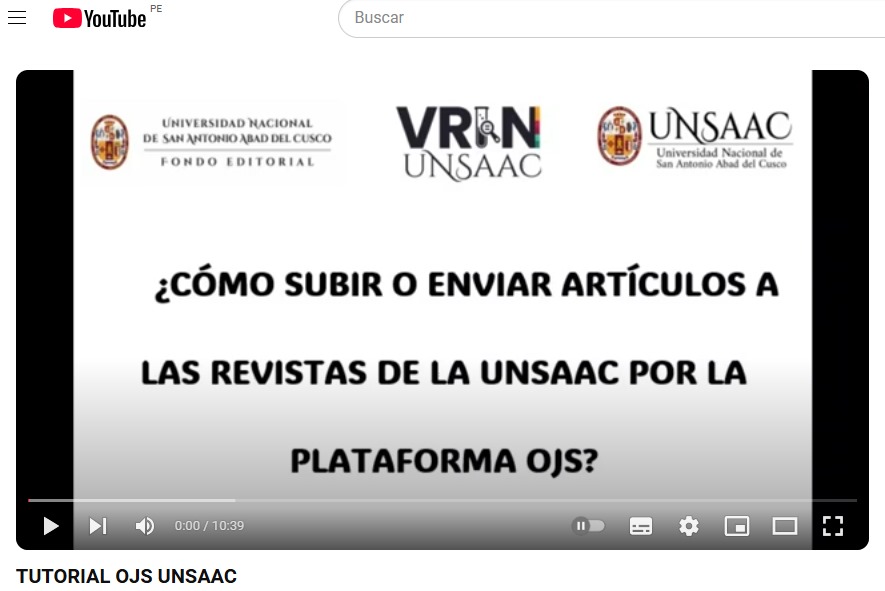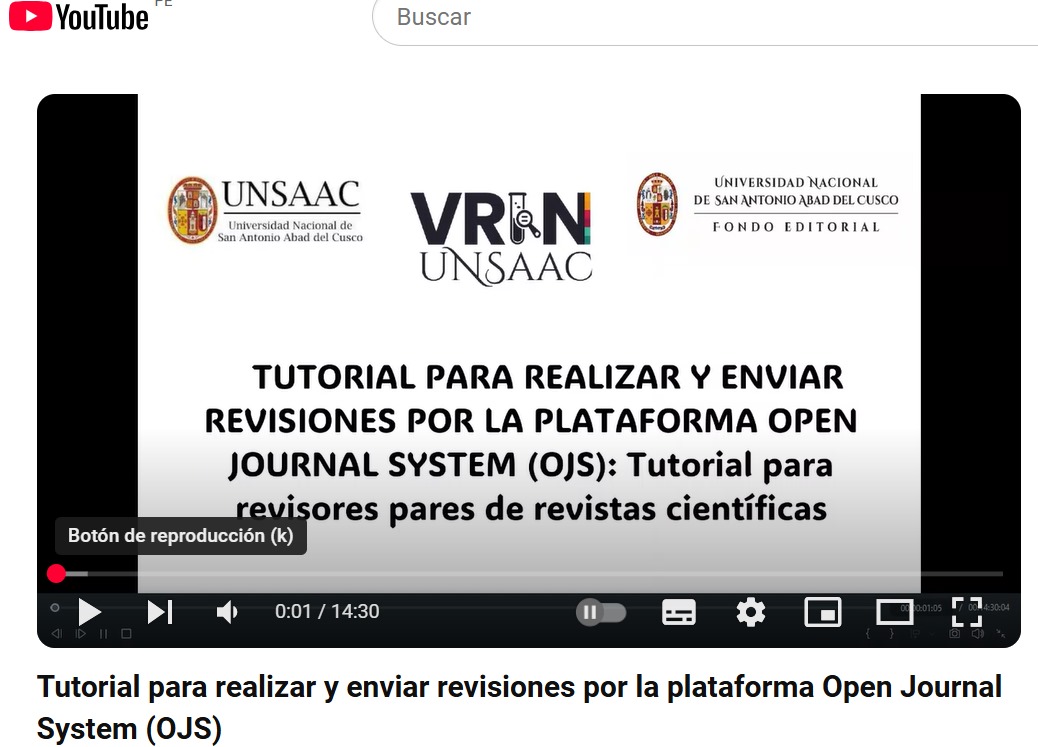Biopelículas de microalgas y cianobacterias, pioneras en la colonización y deterioro del monumento de saqsaywaman
DOI:
https://doi.org/10.51343/racs.v8i1.1503Palabras clave:
Biopelículas, Microalgas, Cianobacterias, Estructuras líticas, Deterioro, Conservación, Monumento arqueológicoResumen
El Parque Arqueológico Nacional de Saqsaywaman, en Cusco, Perú, enfrenta la problemática del deterioro causado por la colonización de biopelículas de microalgas y cianobacterias. Estos, junto a bacterias y hongos, participan en el deterioro de las estructuras líticas, alterando la cohesión de las partículas superficiales de dichos materiales. Este hecho representa un desafío en la conservación de este monumento de importancia histórica. El objetivo de este estudio fue identificar microalgas y cianobacterias presentes en las biopelículas que colonizan las estructuras líticas. Para ello, se colectaron muestras de biopelículas en 14 puntos, distribuidos en cinco sitios representativos de este complejo arqueológico. Las muestras se cultivaron en medios BG-11 y BBM para obtener especímenes descriptibles, que permitieran su caracterización morfológica mediante microscopía óptica. Los datos obtenidos se compararon con la base de datos disponible en AlgaeBase. Se logró identificar 9 géneros de cianobacterias, 5 géneros de Chlorophyta, 1 género de Charophyta y 1 género de Ochrophyta. Este estudio constituye el primer reporte taxonómico de cianobacterias y microalgas asociadas biopelículas en las estructuras líticas del monumento de Saqsaywaman. Los hallazgos no solo amplían el conocimiento científico, sino también orientaran intervenciones futuras, mediante diseño de estrategias de conservación y manejo integral del patrimonio cultural.
Descargas
Citas
Abdulla, H. (2009). Bioweathering and biotransformation of granitic rock minerals by actinomycetes. Microbial Ecology, 58(4), 753–761. https://doi.org/10.1007/s00248-009-9549-1
Alibrandi, M. (2011). Pre-Incan Archeology of Peru: Paleo-Indians in the Paleo-Climate. The Geography Teacher, 8(2), 53–71. https://doi.org/10.1080/19338341.2011.571137
Bischoff, H. W., & Bold, H. C. (1963). Phycological studies IV. Some soil algae from Enchanted Rock and related algal species (University of Texas Publication No. 6318, p. 95). University of Texas.
Bolívar-Galiano, F., Abad-Ruiz, C., Sánchez-Castillo, P., Toscano, M., & Romero-Noguera, J. (2020). Frequent Microalgae in the Fountains of the Alhambra and Generalife: Identification and Creation of a Culture Collection. Applied Sciences, 10(18), 6603. https://doi.org/10.3390/app10186603
Caneva, G., Nugari, M. P., & Salvadori, O. (2008). Control of biodeterioration and bioremediation techniques. En G. Caneva, M. P. Nugari, & O. Salvadori (Eds.), Plant biology for cultural heritage: Biodeterioration and conservation (pp. 309–345). Getty Conservation Institute.
Cartwright, M. (2016, July 20). Saqsaywaman. World History Encyclopedia. Retrieved from https://www.worldhistory.org/Saqsaywaman/
Cirone, M., Figoli, A., Galiano, F., La Russa, M. F., Macchia, A., Mancuso, R., Ricca, M., Rovella, N., Taverniti, M., & Ruffolo, S. A. (2023). Innovative Methodologies for the Conservation of Cultural Heritage against Biodeterioration: A Review. Coatings, 13(12), 1986 https://doi.org/10.3390/coatings13121986
Crispim, C. A., Gaylarde, C. C., & Gaylarde, P. M. (2004). Biofilms on church walls in Porto Alegre, RS, Brazil, with special attention to cyanobacteria. International Biodeterioration & Biodegradation, 54(2–3), 121–124. https://doi.org/10.1016/j.ibiod.2004.03.001
Decho, A. W. (2000). Exopolymer microdomains as a structuring agent for heterogeneity within microbial biofilms. In R. E. Riding & S. M. Awramik (Eds.), Microbial sediments (pp. 9–15). Springer. https://doi.org/10.1007/978-3-662-04036-2_2
Domozych, D. S., & LoRicco, J. G. (2023). The extracellular matrix of green algae. Plant Physiology, 194(1), 15–32. https://doi.org/10.1093/plphys/kiad384
ElBaghdady, K. Z., Tolba, S. T., & Houssien, S. S. (2019). Biogenic deterioration of Egyptian limestone monuments: Treatment and conservation. Journal of Cultural Heritage, 38, 118–125. https://doi.org/10.1016/j.culher.2019.02.005
Galindo-Alcázar, O., Medina-Jaritz, N. B., Garduño-Solórzano, G., & Olvera-Ramírez, R. (2018). Cianobacterias y microalgas de biopelículas superficiales de la zona arqueológica de Malinalco, México. Polibotánica, (45), 131–146. https://doi.org/10.18387/polibotanica.45.10
García Calderón, E. (2018). Saqsaywamán: Revalorización del sitio prehispánico, a través de las investigaciones arqueológicas y etnohistóricas en el sector de “Muyuqmarka” [Tesis de licenciatura, Universidad Complutense de Madrid]. Universidad Complutense de Madrid. https://produccioncientifica.ucm.es/documentos/5d3664cd299952263c4d318b?lang=fr
García Calderón, E. (2000). Informe anual de investigación arqueológica Saqsaywaman-2000: Suchuna Qocha, Suchuna Andenes. Cusco INC.
Gaylarde, C. C. (2020). Influence of environment on microbial colonization of historic stone Heritage, buildings with emphasis on cyanobacteria. Heritage, 3(4), 1469–1482. https://doi.org/10.3390/heritage3040081
González, F. J. A., Muro, A. L., & Barrera, D. A. L. G. (2012). Biopelículas multiespecie: Asociarse para vivir. Investigación y Ciencia: de la Universidad Autónoma de Aguascalientes, (54), 49–56. https://dialnet.unirioja.es/servlet/articulo?codigo=4032052
Gorbushina, A. A. (2007). Life on the rocks. Environmental Microbiology, 9(7), 1613–1631. https://doi.org/10.1111/j.1462-2920.2007.01301.x
Ibarra-Gallardo, Carlos Eduardo, & Novelo, Eberto. (2018). Algas y cianoprocariontes epilíticos de la Zona Arqueológica de Yaxchilán, Chiapas, México. Revista mexicana de biodiversidad, 89(3), 590-603. https://doi.org/10.22201/ib.20078706e.2018.3.2290
Jones, A. A., & Bennett, P. C. (2017). Mineral Ecology: Surface Specific Colonization and Geochemical Drivers of Biofilm Accumulation, Composition, and Phylogeny. Frontiers in microbiology, 8, 491. https://doi.org/10.3389/fmicb.2017.00491
Jurado, V., Hernandez-Marine, M., Rogerio-Candelera, M. A., Ruano, F., Aguilar, C., Aguilar, J., & Saiz-Jimenez, C. (2022). Cleaning of phototrophic biofilms in a show cave: The case of Tesoro Cave, Spain. Applied Sciences, 12(15), 7357. https://doi.org/10.3390/app12157357
Kala, R., & Pandey, V. D. (2021). Biocolonization and biodeterioration of monuments by cyanobacteria. Plant Archives, 21(1), 1531–1536. https://doi.org/10.51470/plantarchives.2021.v21.no1.208
Liu, X., Koestler, R. J., Warscheid, T., Brimblecombe, P., Sato, K., McNamara, C. J., & Mitchell, R. (2020). Microbial deterioration and sustainable conservation of stone monuments and buildings. Nature Sustainability, 3(12), 991–1004. https://doi.org/10.1038/s41893-020-00602-5
Mar R. y Beltrán-Caballero J. A. (2015). El conjunto arqueológico de Saqsaywaman (Cusco): una aproximación a su arquitectura. Revista Española de Antropología Americana, 44(1), 9-38. https://doi.org/10.5209/rev_REAA.2014.v44.n1.47633
McNamara, C. J., Perry, T. D., 4th, Bearce, K. A., Hernandez-Duque, G., & Mitchell, R. (2006). Epilithic and endolithic bacterial communities in limestone from a Maya archaeological site. Microbial ecology, 51(1), 51–64. https://doi.org/10.1007/s00248-005-0200-5
Mehta, D., & Shah, D. (2021). Cyanobacteria and microalgae growing on monuments of UNESCO World Heritage site Champaner Pavagadh, India: Biofilms and their exopolysaccharide composition. Archives of Microbiology, 203(6), 3425–3433. https://doi.org/10.1007/s00203-021-02334-2
Mikhailyuk, T., Glaser, K., Holzinger, A., & Karsten, U. (2015). Biodiversity of Klebsormidium (streptophyta) from alpine biological soil crusts (alps, tyrol, Austria, and Italy). Journal of phycology, 51(4), 750–767. https://doi.org/10.1111/jpy.12316
Miller, A. Z., Dionísio, A., Laiz, L., Macedo, M. F., & Saiz-Jimenez, C. (2009). The influence of inherent properties of building limestones on their bioreceptivity to phototrophic microorganisms. Annals of Microbiology. Springer Science and Business Media LLC. http://doi.org/10.1007/bf03179212
Miller, A. Z., Sanmartín, P., Pereira-Pardo, L., Dionísio, A., Saiz-Jimenez, C., Macedo, M. F., & Prieto, B. (2012). Bioreceptivity of building stones: a review. The Science of the total environment, 426, 1–12. https://doi.org/10.1016/j.scitotenv.2012.03.026
Monteverde Sotil, R. (2011). Esculturas zoomorfas talladas en afloramientos rocosos dentro del Parque Arqueológico de Sacsayhuamán-Cuzco. Revista Haucaypata: Investigaciones Arqueológicas del Tahuantinsuyo, (5), 6–31.
Nayak, R., Pradhan, B., Patra, S., Bhuyan, P. P., Behera, C., Parida, S., Behera, A. K., Mandal, A. K., & Jena, M. (2023). Microalgal biofilm and their prospective application for wastewater treatment and biofuel production. En S. Das & N. A. Kungwani (Eds.), Understanding microbial biofilms (pp. 147–164). Academic Press. https://doi.org/10.1016/B978-0-323-99977-9.00021-1
Ortega-Calvo, J. J., Hernandez-Marine, M., & Saiz-Jimenez, C. (1991). Biodeterioration of building materials by cyanobacteria and algae. International Biodeterioration, 28(1–4), 165–185. https://doi.org/10.1016/0265-3036(91)90041-O
Ortega-Morales, B. O., & Gaylarde, C. C. (2021). Bioconservation of historic stone buildings An updated review. Applied Sciences, 11(12), 5695. https://doi.org/10.3390/app11125695
Pinheiro, A. C., Mesquita, N., Trovão, J., Soares, F., Tiago, I., Coelho, C., Paiva de Carvalho, H., Gil, F., Catarino, L., Piñar, G., & Portugal, A. (2019). Limestone biodeterioration: A review on the Portuguese cultural heritage scenario. Journal of Cultural Heritage, 36, 275–285. https://doi.org/10.1016/j.culher.2018.07.008
Pinna, D. (2017). Coping with biological growth on stone heritage objects: Methods, products, applications, and perspectives. Routledge. https://doi.org/10.1201/9781315365510
Pinna, D. (2021). Microbial growth and its effects on inorganic heritage materials. En E. Joseph (Ed.), Microorganisms in the deterioration and preservation of cultural heritage (pp. 3–35). Springer International Publishing. https://doi.org/10.1007/978-3-030-69411-1_1
Prieto, B., Vázquez-Nion, D., Fuentes, E., & Durán-Román, A. G. (2020). Response of subaerial biofilms growing on stone-built cultural heritage to changing water regime and CO₂ conditions. International Biodeterioration & Biodegradation, 148, 104882. https://doi.org/10.1016/j.ibiod.2019.104882
Raghavan, P. S., Potnis, A. A., & Rajaram, H. (2023). Cyanobacterial biofilms: Perspectives from origin to applications. En S. Das & N. A. Kungwani (Eds.), Understanding microbial biofilms (pp. 23–39). Academic Press. https://doi.org/10.1016/B978-0-323-99977-9.00041-7
Rippka, R., Deruelles, J., Waterbury, J. B., Herdman, M., & Stanier, R. Y. (1979). Generic assignments, strain histories and properties of pure cultures of cyanobacteria. Microbiology, 111(1), 1–61. https://doi.org/10.1099/00221287-111-1-1
Römling, U. (2023). Is biofilm formation intrinsic to the origin of life?. Environmental Microbiology, 25(1), 26–39. https://doi.org/10.1111/1462-2920.16179
Rouse, I. (1975). Peruvian prehistory: The peoples and cultures of ancient Peru by Luis Lumbreras (B. J. Meggers, Trans.). Smithsonian Institution Press. [Review of the book Peruvian prehistory: The peoples and cultures of ancient Peru, by L. Lumbreras]. Science, 188(4183), 44. https://doi.org/10.1126/science.188.4183.44.a
Saiz-Jimenez, C. (2023). Special Issue on Interdisciplinary Researches for Cultural Heritage Conservation. Applied Sciences, 13(3), 1824. https://doi.org/10.3390/app13031824
Scheerer, S., Ortega-Morales, O., & Gaylarde, C. (2009). Microbial deterioration of stone monuments--an updated overview. Advances in applied microbiology, 66, 97–139. https://doi.org/10.1016/S0065-2164(08)00805-8
Stone, M. (2015). Small talk: The evolution of bacterial languages. BioScience, 65(3), 336. https://doi.org/10.1093/biosci/biu231
Tai, J. B., Mukherjee, S., Nero, T., Olson, R., Tithof, J., Nadell, C. D., & Yan, J. (2022). Social evolution of shared biofilm matrix components. Proceedings of the National Academy of Sciences of the United States of America, 119(27), e2123469119. https://doi.org/10.1073/pnas.2123469119
Trovão, J., Tiago, I., Catarino, L., Gil, F., & Portugal, A. (2020). In vitro analyses of fungi and dolomitic limestone interactions: Bioreceptivity and biodeterioration assessment. International Biodeterioration & Biodegradation, 155, 105107. https://doi.org/10.1016/j.ibiod.2020.105107
Uher, B., Aboal, M., & Kovacik, L. (2005). Epilithic and chasmoendolithic phycoflora of monuments and buildings in South-Eastern Spain. Cryptogamie, Algologie, 26, 275–358.
Unesco. (1983). City of Cuzco. World Heritage List. UNESCO World Heritage Centre. Retrieved from https://whc.unesco.org/en/list/273
Varma, A., & Buscot, F. (Eds.). (2005). Microorganisms in soils: Roles in genesis and functions (1st ed.). Springer-Verlag Berlin Heidelberg. https://doi.org/10.1007/b137872
Vázquez-Nion, D., Silva, B., & Prieto, B. (2018). Influence of the properties of granitic rocks on their bioreceptivity to subaerial phototrophic biofilms. Science of the Total Environment, 610–611, 44–54. https://doi.org/10.1016/j.scitotenv.2017.08.015
Wakefield, R. D., & Jones, M. S. (1998). An introduction to stone colonizing micro-organisms and biodeterioration of building stone. Quarterly Journal of Engineering Geology and Hydrogeology, 31(4), 301–313. https://doi.org/10.1144/GSL.QJEG.1998.031.P4.03
Watts, T. B. (2001). The ecology of cyanobacteria: Their diversity in time and space [Review of the book The ecology of cyanobacteria: Their diversity in time and space]. Diversity and Distributions, 7(3), 203–204. https://doi.org/10.1046/j.1366-9516.2001.00118.x
Publicado
Cómo citar
Número
Sección
Licencia
Derechos de autor 2025 Yuri Nilton Cjuno Huaman, Siclla Rogelio, Cjuno Olga L.

Esta obra está bajo una licencia internacional Creative Commons Atribución 4.0.
Usted es libre de:
- Compartir: Copiar y redistribuir el material en cualquier medio o formato para cualquier propósito, incluso comercialmente.
- Adaptar: Remezclar, transformar y construir a partir del material para cualquier propósito, incluso comercialmente.










.png)



